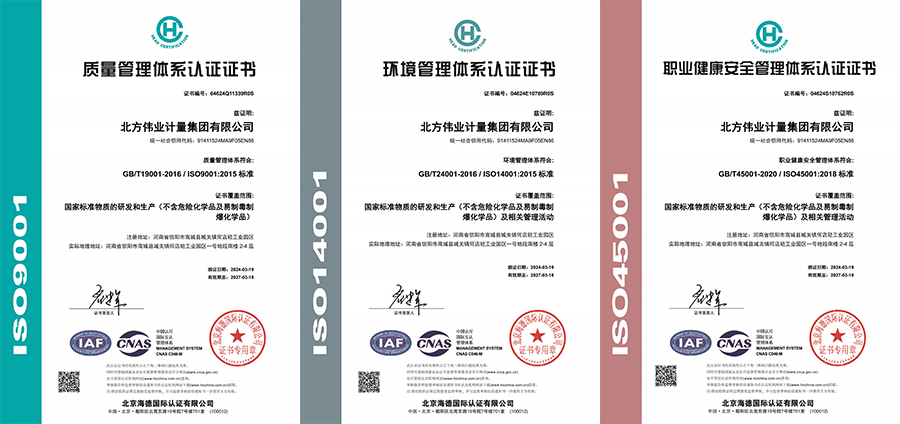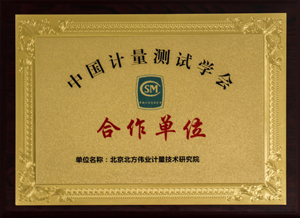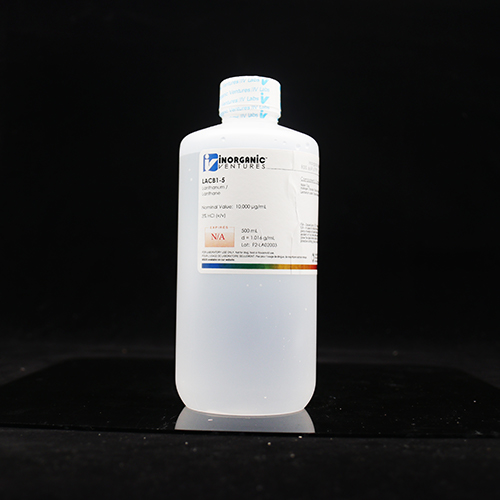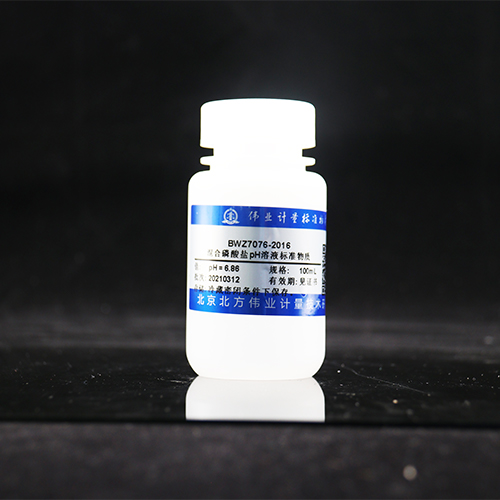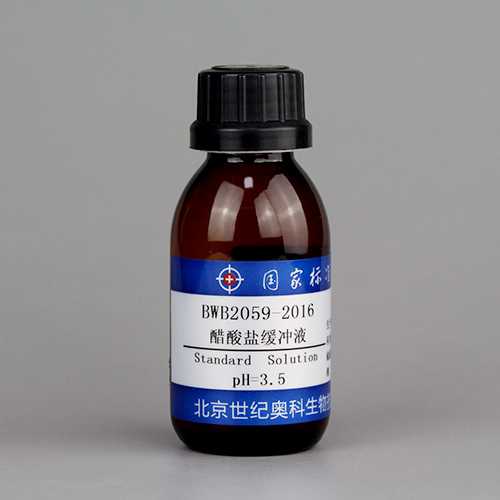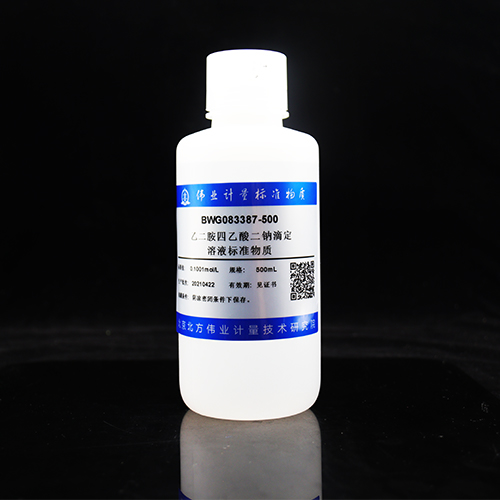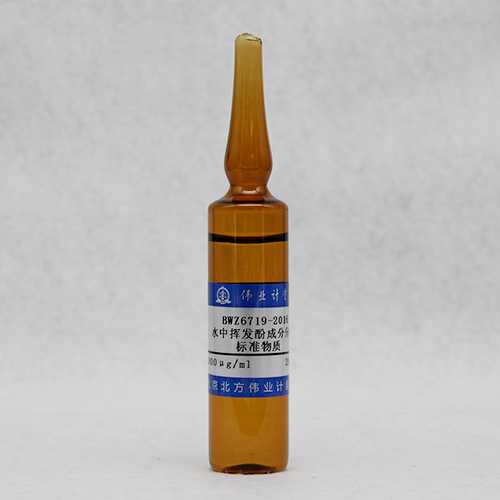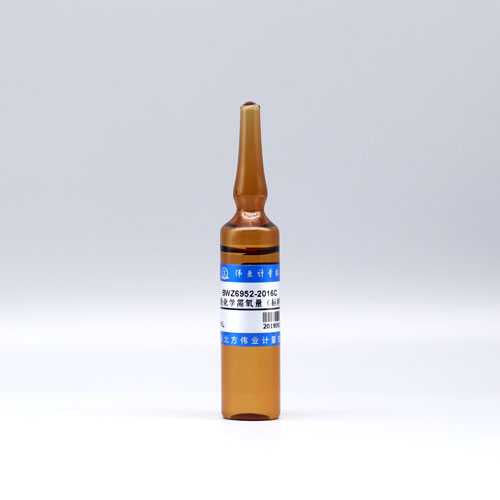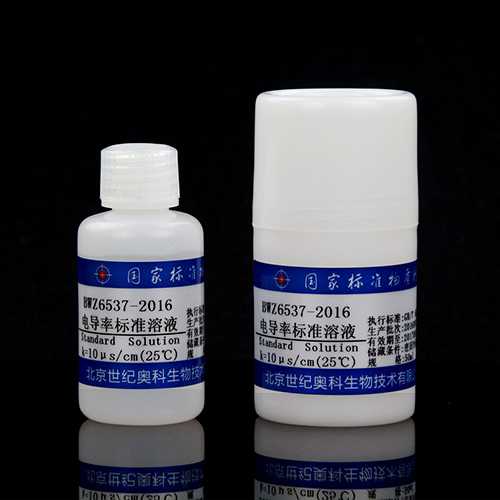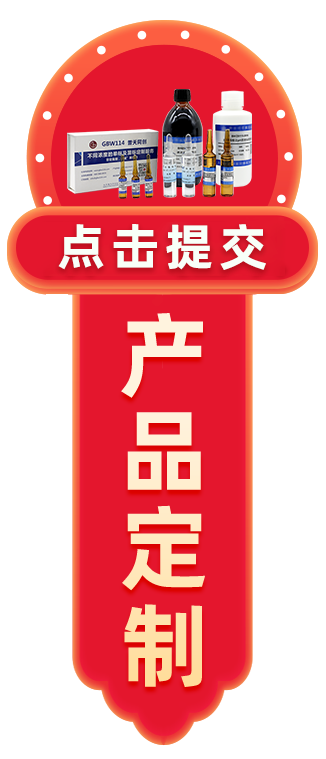RELEASING AGENT: 10000μg/mL Lanthanum in 3% HCL (v/v)
Starting Material: Lanthanum Oxide
Nominal Concentration: 10000μg/mL (Not to be used as a calibration standard. For analytical reagent use only.)
ANALYZED DENSITY OF SOLUTION (measured at 20±1°C): 1.016 g/mL
QUALITY STANDARD DOCUMENTATION
1. ISO 9001 Quality Management System Registration
-QMI Certificate Number 010105
2.ISO/IEC 17025 "General Requirements for the Competence of Testing and Calibration"
-Chemical Testing - Accredited A2LA Certificate Number 883.01
3. ISO/IEC Guide 34 "General Requirements for the Competence of Reference Material Producers"
-Reference Materials Production - Accredited A2LA Certiticate Number 883.02
4. 10CFR50 Appendix B - Nuclear Regulatory Commission
-Domestic Licensing of Production and Utilization Facilities
5. 10CFR21 - Nuclear Regulatory Commission
-Reporting Defects and Non-Compliance
GLASSWARE CALIBRATION
An in-house procedure is used to calibrate all Class A glassware used in the manufacturing and quality control of CRM's.
BALANCE CALIBRATION
All analytical balances are calibrated yearly by an A2LA accredited calibration laboratory and are traceable to a class E 2 analytical weight set with NIST Traceability. All balances are checked daily using an in-house procedure. The weights used for testing are annually compared to master weights and are traceable to the National Institute of Standards and Technology (NIST).
THERMOMETER CALIBRATION
All thermometers are NIST traceable through thermometers that are calibrated by an A2LA accredited calibration laboratory.
1. IDENTIFICATION OF THE SUBSTANCE/PREPARATION AND THE COMPANY/UNDERTAKING
Product name: 1.0% Lanthanum Releasing Agent
Common Name: Lanthanum in Dilute Hydrochloric Acid
2. COMPOSITION/INFORMATION ON INGREDIENTS
|
CAS
|
Chemical Name
|
% Weight
|
ACGIH*
|
ACGIH*
|
OSHA*
|
OSHA*
|
OSHA*
|
OSHA*
|
OSHA*
|
|
7732-18-5
|
Water
|
~96
|
N/A
|
N/A
|
N/A
|
N/A
|
N/A
|
N/A
|
N/A
|
|
7647-01-0
|
Hydrogen chloride
|
~3
|
N/A
|
N/A
|
N/A
|
5 ppm Ceiling; 7 mg/m3 Ceiling
|
N/A
|
N/A
|
N/A
|
|
1312-81-8
|
Lanthanum oxide (La2O3)
|
~1
|
N/A
|
N/A
|
N/A
|
N/A
|
N/A
|
N/A
|
N/A
|
*ACGIH - Occupational Exposure Limits - TWAs
*ACGIH - Occupational Exposure Limits - STELs
* OSHA - Final PELs - Time Weighted Averages (TWAs)
* OSHA - Final PELs - Ceiling Limits
* OSHA - Final PELs - Short Term Exposure Limits
* OSHA - Regulated Carcinogens
* OSHA - Select Carcinogens
3. HAZARDS IDENTIFICATION
Emergency Overview
· Vapours may be irritating to eyes, nose, throat, arc kgs
· Corrosive
|
Eye contact
|
Irritating to eyes
|
|
Skin contact
|
Irritating to skin
|
|
Inhalation
|
May cause irritation of respiratory tract
|
|
Ingestion
|
Harmful if swallowed
If ingested, severe burns of the mouth and throat, as well as a danger of perforation of the esophagus and the stomach
|
4. FIRST AID MEASURES
|
General advice
|
Show this safety data sheet to the doctor in attendance
|
|
Skin contact
|
Wash off immediately with soap and plenty of water removing all contaminated clothes and shoes
Consult a physician if necessary
|
|
Eye contact
|
Immediately flush with plenty of water. After initial flushing, remove any contact lenses and continue flushing for at least 15 minutes
Keep eye wide open while rinsing
If eye irritation persists, consult a specialist
|
|
Inhalation
|
Move to fresh air in case of accidental inhalation of vapours
If breathing is difficult, give oxygen
Consult a physician if necessary
|
|
Ingestion
|
Call a physician or Poison Control Centre immediately
If swallowed, seek medical advice immediately and show this container or label
If conscious, drink plenty of water
|
5. FIRE-FIGHTING MEASURES
|
Flash point
|
NA
|
|
Suitable extinguishing media
|
Use extinguishing measures that are appropriate to local circumstances and the surrounding environment
|
|
Specific hazards
|
Thermal decomposition can lead to release of irritating gases and vapours
|
|
Specific methods
|
Fire residues and contaminated fire extinguishing water must be disposed of in accordance with local regulations
|
|
Special protective equipment for firefighters
|
As in any fire, wear self-contained breathing apparatus pressure-demand, MSHA/NIOSH (approved or equivalent) and full protective gear
|
|
NFPA (National Fire Protection Association)
|
Health - 2
Fire Hazard - 0
Reactivity - 0
|
|
Under conditions giving incomplete combustion, hazardous gases produced may consist of:
|
Hydrogen chloride gas.
|
6. ACCIDENTAL RELEASE MEASURES
|
Personal precautions
|
Evacuate personnel to safe areas
Keep people away from and upwind of spill/leak
Wear personal protective equipment
Ensure adequate ventilation
|
|
Environmental precautions
|
Prevent further leakage or spillage if safe to do so
Prevent product from entering drains
|
|
Methods for cleaning up
|
Dam up
Neutralize with lime milk or soda and flush with plenty of water
Absorb spill with inert material (e.g. dry sand or earth), then place in a chemical waste container
After cleaning, flush away traces with water
|
7. HANDLING AND STORAGE
Handling
|
Technical measures/Precautions
|
Use only in area provided with appropriate exhaust ventilation
|
|
Safe handling advice
|
Wear personal protective equipment
|
Storage
|
Technical measures/Precautions
|
Keep in properly labelled containers
Store at room temperature in the original container
Keep containers tightly closed in a dry, cool and well-ventilated place
|
|
Incompatible products
|
organic materials
reducing agents
|
8. EXPOSURE CONTROLS/PERSONAL PROTECTION
|
Personal protective equipment
|
|
|
Hand protection
|
impervious gloves
|
|
Eye protection
|
tightly fitting safety goggles
|
|
Respiratory protection
|
Ensure adequate ventilation
|
|
Skin and body protection
|
Chemical resistant apron
Lab coat
|
|
Hygiene measures
|
When using, do not eat, drink or smoke
Regular cleaning of equipment, work area and clothing
|
9. PHYSICAL AND CHEMICAL PROPERTIES
General Information
Form: liquid
Appearance: clear
Colour: colorless
Odour: slight chlorine
Important Health Safety and Environmental Information
pH: 0 to 2
Boiling point/range: 100°C
Flash point: N/A
Vapour pressure: NA.
Water solubility: miscible
10. STABILITY AND REACTIVITY
|
Stability
|
Stable under normal conditions
Hazardous polymerisation does not occur
|
|
Materials to avoid
|
organic materials
reducing agents
|
|
Hazardous decomposition
|
Hydrogen chloride gas
|
11. TOXICOLOGICAL INFORMATION
Acute toxicity
Component Information
|
CAS
|
Chemical Name
|
% Weight
|
LD50/oral/rat =
|
LD50/dermal/rat =
|
|
7732-18-5
|
Water
|
-96
|
N/A
|
N/A
|
|
7647-01-0
|
Hydrogen chloride
|
~3
|
Inhalation LC50 Rat: 3124 ppm/1H
|
Inhalation LC50 Rat: 3124 ppm/1 H
|
|
1312-81-8
|
Lanthanum oxide (La2O3)
|
〜1
|
Oral LD50 Rat: >9968 mg/kg
|
Oral LD50 Rat: >9968 mg/kg
|
Product Information
|
Local effects
|
|
|
Skin irritation
|
May cause skin irritation and/or dermatitis.
|
|
Eye irritation
|
May cause eye irritation with susceptible persons.
|
|
Inhalation
|
May cause irritation of respiratory tract.
|
|
Ingestion
|
Harmful if swallowed. If ingested, severe burns of the mouth and throat, as well as a danger of perforation of the esophagus and the stomach.
|
|
Chronic toxicity
|
Avoid repeated exposure.
|
12. ECOLOGICAL INFORMATION
Ecotoxicitv effects
Component Information
|
CAS
|
Chemical Name
|
% Weight
|
EFAD*
|
EFFSD*
|
EMD-Ecotoxicity
|
|
7732-18-5
|
Water
|
~96
|
N/A
|
N/A
|
N/A
|
|
7647-01-0
|
Hydrogen chloride
|
〜3
|
N/A
|
48 Hr LC50 bluegill: 3.6 mg/L
|
N/A
|
|
1312-81-8
|
Lanthanum oxide (La2O3)
|
~1
|
N/A
|
N/A
|
N/A
|
*EFAD - Ecotoxicity - Freshwater Algae Data
*EFFSD - Ecotoxicity - Freshwater Fish Species Data
*EMD - Ecotoxicity - Microtox Data
Product Information
Do not allow material to contaminate ground water or sewage system
Other information
13. DISPOSAL CONSIDERATIONS
|
Waste from residues / unused products
|
In accordance with local and national regulations
|
|
Contaminated packaging
|
Empty containers should be taken for local recycling, recovery or waste disposal
|
14. TRANSPORT INFORMATION
DOT
UN-No: UN3264/Class 8
Proper shipping name: Corrosive liquid, acidic, inorganic, n.o.s
Packing group: III
IATA・DGR
UN-No: UN3264/Class 8
Proper shipping name:
Corrosive liquid, acidic, inorganic, n.o.s
Packing group: III
15. REGULATORY INFORMATION
U.S. INVENTORIES:
|
CAS
|
Chemical Name
|
% Weight
|
CERCLA/SARA*
|
CPCL*
|
NJRTK*
|
TSCA*
|
|
7732-18-5
|
Water
|
〜96
|
N/A
|
N/A
|
N/A
|
Present
|
|
7647-01-0
|
Hydrogen chloride
|
〜3
|
5000 lb final RQ;
2270 kg final RQ
|
N/A
|
sn 1012; sn 2909 (gas only)
|
T
|
|
1312-81-8
|
Lanthanum oxide
(La2O3)
|
~1
|
N/A
|
N/A
|
N/A
|
Present
|
*CERCLA/SARA - Hazardous Substances and their Reportable Quantities
*CPCL - California - Proposition 65 - Carcinogens List
*NJRTK - New Jersey - Department of Health RTK List
*TSCA - United States - Section 8 (b) Inventory (TSCA)
INTERNATIONAL INVENTORIES:
|
CAS
|
Chemical Name
|
% Weight
|
AICS - Australia*
|
ELINCS - EU list of Notified Chemical Substances (ELINCS)
|
ENCS*
|
WHMIS*
|
|
7732-18-5
|
Water
|
-96
|
Present
|
N/A
|
N/A
|
Uncontrolled product according to WHMIS classification criteria
|
|
7647-01-0
|
Hydrogen chloride
|
~3
|
Present
|
N/A
|
1-215
|
A, D1A, E; E (including 0.02 N, 0.05 N, 0.2 N, 0.333 N,0.5 N); D1B, E (including 10%, 28%,
2 N); D1A, E (including 31.45%, 32%)
|
|
1312-81-8
|
Lanthanum oxide
(La2O3)
|
-1
|
Present
|
N/A
|
1-757
|
N/A
|
*AICS - Australia - Inventory of Chemical Substances (AICS)
*ENCS - Japan Existing and New Chemical Substances (ENCS)
*WHMIS - Canada - WHMIS - Classifications of Substances
16. OTHER INFORMATION
The above information is believed to be accurate and represents the best information available to us. It has been compiled from the data presented in various technical publications and our experience and should only be used as a guide for handling this product. It is the user's responsibility to determine the suitability of this information for their particular purposes. We assume that only qualified individuals, trained and familiar With procedures suitable to this product will handle this material. Inorganic Ventures, Inc. assumes no responsibility and shall not be held liable for any damage resulting from misuse of this product.
注:证书信息仅供参考,以产品附带证书为准。






